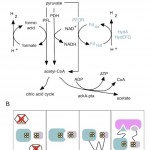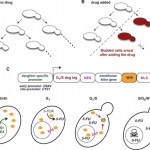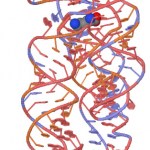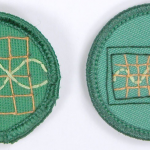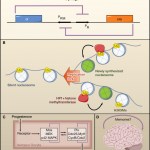circuits
There is something I am working on that will need some type of angle sensor. I am going to use a potentiometer. First, who came up with that name? Isn't this name the same as a voltmeter? Something is wrong with that name. How about we just call it a variable resistor or something like that?
These things are pretty easy to find if you have some old electronic stuff. Here is one I found in our "junk room".
This one was used in a lab as a variable resistor with plugs built in. The normal potentiometer has three connections; one for each end and one for the variable position in the…
This summer I taught the part II of algebra-based physics. It is odd, but I rarely teach this course. I usually end up teaching the calculus-based version (with Matter and Interactions). There is something strange. If you look at the algebra-based physics I and calculus-based physics I, they are just about the same course. Both essentially cover forces, momentum, energy, and angular momentum. Oh, I know - some also cover waves and pressure and sound and stuff.
I think what tipped me off to the big difference in the algebra-based physics II is the theme in Matter and Interactions. Yes,…
My paper, "Insulation of a synthetic hydrogen metabolism circuit in bacteria" just came out in the Journal of Biological Engineering! And it's open access!
We designed a metabolic circuit in bacteria that produces hydrogen (a potentially useful fuel) from natural precursors in the cell. The proteins in our synthetic pathway work to make hydrogen by transferring high-energy electrons from pyruvate, a common metabolite, to protons that are freely floating in the watery cytoplasm. The electrons transfer between the proteins through quantum-mechanical tunneling, which makes hydrogenases and…
My labmate Bruno's newest paper, "A synthetic circuit for selectively arresting daughter cells to create aging populations" came out today in the journal Nucleic Acids Research (and it's open access!). Using a cleverly designed genetic circuit that activates cell growth arrest in newly divided cells only in the presence of a drug, Bruno was able to create a population of yeast made up of only old cells, called the "daughter arrester."
You would think that yeast, being so single celled and bread-y, wouldn't be able to tell us much about human biology or anything as complex as aging, but many…
Today in my searches for the hot new trends in synthetic biology, I found a news article from Science Daily with an intriguing title: "Scientists Achieve First Rewire of Genetic Switches." Rewiring genetic switches sounds pretty neat, but this headline was intriguing to me first of all because it's kind of late to the party--in fact one of the first papers in modern synthetic biology back in 2000 was about engineered genetic switches: "Construction of a genetic toggle switch in Escherichia coli". When I looked more closely, the article wasn't about this kind of transcriptional switch though,…
Check out these cute hand-embroidered oscilloscope merit badges! Available on Etsy.
Oscillators are huge in synthetic biology. They're an exciting challenge, very hard to make in a controlled, robust way, they have the potential to be useful in many applications, like well-timed drug delivery, and they can tell us a lot about how natural circadian rhythms work. A new paper in this week's issue of Nature from Jeff Hasty's group at UCSD presents a new synthetic biological oscillator in bacteria. While there have been a lot of oscillators designed in the past few years, this one is special because it couples oscillations in fluorescence to bacterial quorum sensing, allowing the…
My friend Devin's essay, "Making Cellular Memories" just came out today in Cell (and it's open access!) It's a great look at how natural cells and synthetic biological systems use feedback loops in order to maintain memory of past events. Like whole animals, cells need to remember what happened to them before in order to respond appropriately to new signals. Synthetic biologists can use memory to track cells that have experienced a certain input in a heterogeneous population, and to activate different responses depending on the historical context.
In sum, both nature's wisdom and previously…
Let me start off by saying I think I first read about this on HowStuffWorks.com (many years ago). So, why are christmas lights so cool? They are cool because they are a whole bunch of lights in series, but they still work if one of the bulbs gets burnt out. If you are not familiar with circuits, a series circuit is one in which all of the current goes through all of the items in that circuit (as compared to the case where the current gets split up). Here is an example of a series circuit with two bulbs.
In this case, the current comes out of the battery, goes through one filament and…
tags: internet cats, humor, Catz PWN, streaming video
Do you trip over objects, such as toys and cats, as you make your way to the bathroom in the middle of the night? Well, trip no more by making your own LED "headlight slippers" -- this video shows you how! [0:53]
$5 Headlight Slippers ! - video hosted by Metacafe
